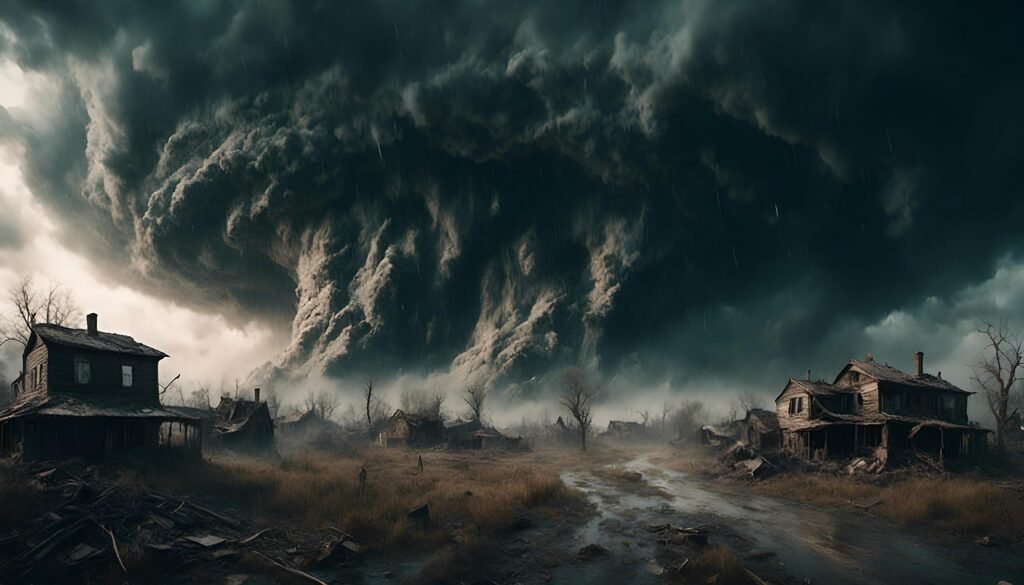Hurricanes have always been a force of nature, but in a warming world, their behavior is becoming less predictable and potentially more destructive. Over the past four decades, hurricanes have inflicted $1.5 trillion in economic losses in the U.S. alone, accounting for more than half of all weather-related damages. While coastal development and economic growth explain some of this surge, climate change is amplifying the threat in ways we don’t yet fully understand.
Scientists can simulate some features of hurricane wind speeds, rain, storm surges but reconstructing what they’ll become as the planet continues to change is still an enigma. Risks of rising seas and increased rain guarantee that flooding will get worse but other properties, such as changes in storm pathways and variable frequencies, add daunting uncertainties to the mix. If that next hurricane goes against expectations, what’s going to happen? And are we ready?
The Rising Cost of Hurricanes: More Than Just Bad Luck

The cost of hurricanes has escalated wildly, yet assigning it to more residents living closer to coasts overlooks an important consideration: climate change is loading the dice. Hurricanes have accounted for 28% of total weather disaster insured losses in the U.S. since 1980. Inflation and development of coasts contribute, yet research points to warming oceans and an increasingly wet atmosphere as fueling more potent and devastating storms.
But the biggest uncertainty isn’t even just how bad they become, it’s whether our models can keep pace. Hurricanes aren’t following straightforward trends, but are chaotic, shaped by everything from air pollution to Pacific ocean temperatures. If historical data can’t be used to guarantee future storms, what do you do to prepare for what’s next?
Water, Not Wind, Is the Deadliest Threat

When most people think of hurricanes, they imagine howling winds tearing roofs off buildings. But the real killer and the costliest damage comes from water. Flooding accounts for 90% of hurricane-related deaths, and climate change is making it worse.
Here’s why:
- Warmer air contains more moisture, which results in 20-30% additional rain in certain storms.
- Sea levels increased 20 cm (8 inches) from 1900, which means storm surges reach further inland.
- Hurricane Harvey (2017) brought 60 inches of rain to Texas, an indication of what’s possible in an increasingly hot climate.
Even if wind speed remains constant, wetter, more sluggish storms produce extended flooding. And as 500,000 U.S. households face perpetual flooding by 2050, that next “big one” has the potential to overwhelm defenses like never before.
Are Hurricanes Moving Toward Unprepared Cities?

Hurricanes aren’t just getting stronger they might be shifting course. Research shows tropical storms are creeping poleward, meaning places like New York, Boston, and even Canada could face greater risks.
- Hurricane Sandy (2012) was a wake-up call, a freakishly large storm that hit the Northeast, causing $70 billion in damage.
- Scientists now believe warmer oceans could push more storms toward mid-Atlantic states, regions with older infrastructure not built for such extremes.
Even more troubling? Some hurricanes are slowing down, lingering over cities for days (like Hurricane Dorian’s 48-hour stall over the Bahamas). If this trend continues, the next catastrophic flood might not come from a storm’s power but from its unpredictable path.
The Wild Card: Why Storm Frequency Is a Mystery

While we know hurricanes are getting wetter and possibly windier, one question remains hotly debated: Will there be more of them?
- Some models suggest fewer but stronger hurricanes due to changing wind patterns.
- Others warn of more frequent storms, especially in the Atlantic.
- Air pollution cleanup may have unintentionally boosted hurricanes—fewer aerosols (tiny particles that reflect sunlight) mean warmer oceans, fueling more storms.
The problem? We don’t have enough data to say for sure. If the next decade brings a sudden spike in hurricane frequency, would emergency planners even see it coming?
The Unseen Threat: When Models Fail

Modern hurricane forecasts are remarkably accurate three days out. But long-term predictions? Far trickier.
- Chaos theory means tiny changes in ocean temperature or wind shear can drastically alter a storm’s path.
- Historical data is becoming less reliable as the climate shifts from what happened in the 1990s may not apply to 2030.
- “Unknown unknowns” like sudden changes in ocean currents could produce a hurricane unlike any in recorded history.
Case in point: Hurricane Otis (2023) stunned meteorologists when it burst from tropical-storm intensity to Category 5 in only 12 hours before crashing into Acapulco. Will evacuation plans be effective if that is what Miami or Houston experience?
The Bottom Line: Preparing for the Unpredictable

So, what’s the takeaway?
- Flooding will get worse, rising seas and heavier rain mean even “weaker” storms can be devastating.
- The Northeast isn’t safe hurricanes may increasingly target regions with less experience and weaker defenses.
- Forecasts have limits if a storm rapidly intensifies or shifts course last-minute, millions might have only hours to react.
The scariest part? We might not know the full picture until the next mega-storm hits.
What Comes Next?
The days of anticipating hurricanes are coming to an end. With seas that are getting warmer, oceans that rise higher, and shifting weather, the next storm may break every rule. The question isn’t simply how bad it might be, but whether or not we’re prepared for unpredictable.
One thing is for sure: waiting for certainty may be most expensive of all.
Sources:

Jan loves Wildlife and Animals and is one of the founders of Animals Around The Globe. He holds an MSc in Finance & Economics and is a passionate PADI Open Water Diver. His favorite animals are Mountain Gorillas, Tigers, and Great White Sharks. He lived in South Africa, Germany, the USA, Ireland, Italy, China, and Australia. Before AATG, Jan worked for Google, Axel Springer, BMW and others.




